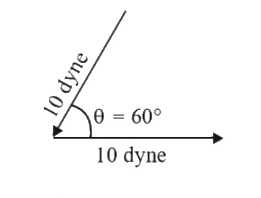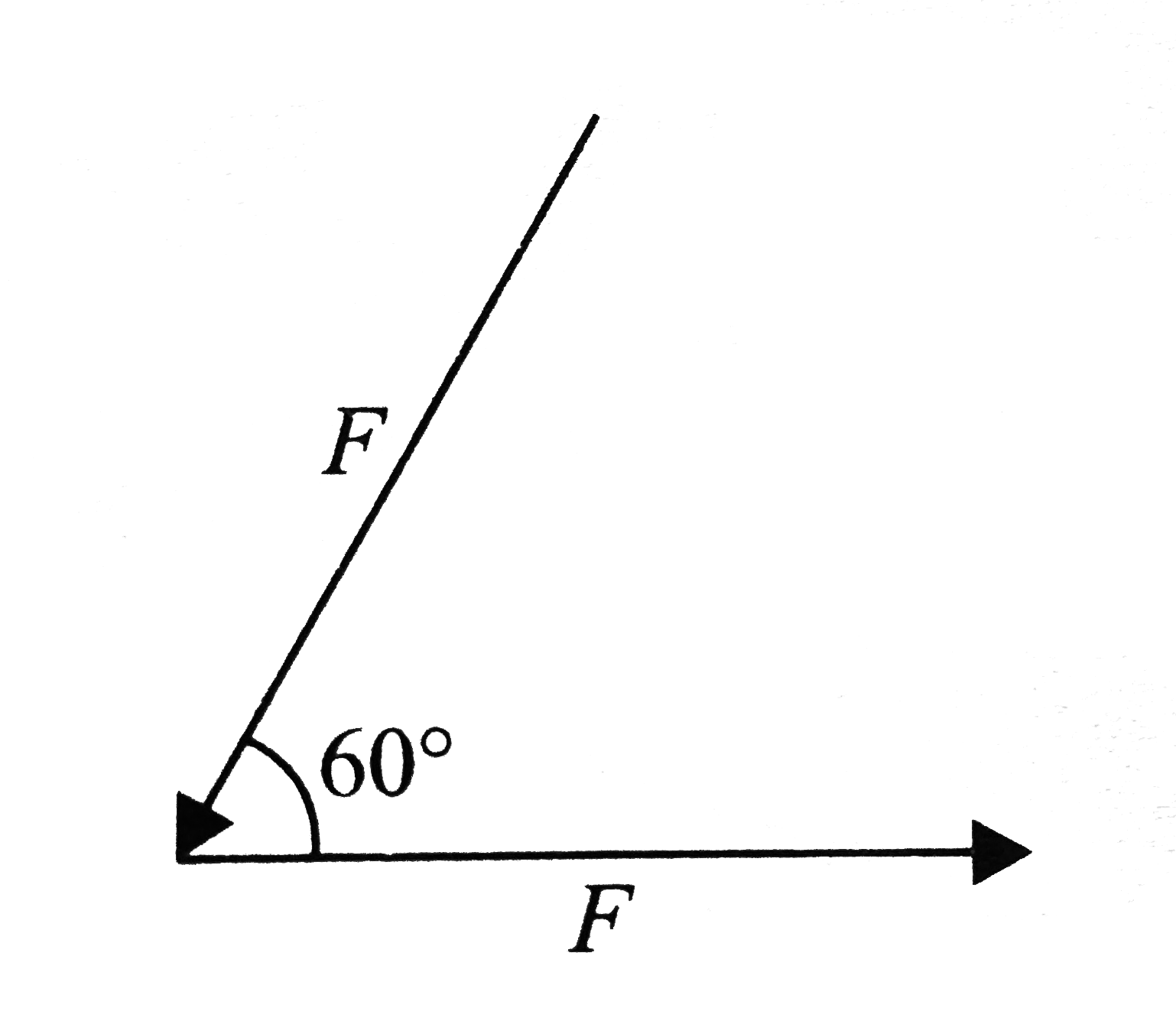Two forces , each numerically equal to 10 dyne are acting as shown in the following figure Their resultant is :

10 dyne
20 dyne
10√3 dyne
5 dyne
The correct Answer is:A
Step by step video & image solution for Two forces , each numerically equal to 10 dyne are acting as shown in the following figure Their resultant is : by Physics experts to help you in doubts & scoring excellent marks in Class 12 exams.
Updated on:21/07/2023Topper's Solved these Questions
- BASIC MATHEMATICS & VECTORSBOOK - VMC MODULES ENGLISHCHAPTER - BASIC MATHEMATICS & VECTORSEXERCISE - Enable
50 Videos
- BASIC MATHEMATICS & VECTORSBOOK - VMC MODULES ENGLISHCHAPTER - BASIC MATHEMATICS & VECTORSEXERCISE - Efficient
50 Videos
- CAPACITORSBOOK - VMC MODULES ENGLISHCHAPTER - CAPACITORSEXERCISE - JEE Advance ( Archive ) LEVEL 48
1 Videos
Similar Questions
Knowledge Check
Five equal resistances of 10Ω are connected between A and B as shown in figure. The resultant resistance
 A10ΩB5ΩC15ΩD6Ω
A10ΩB5ΩC15ΩD6Ω
The circuit shown in the figure acts as

View SolutionFour forces are acting on a body as shown in figure. The magnitude of resultant of the forces is
View SolutionTwo magnets of equal magnetic moments M each are placed as shown in figure below . The resultant magnetic moment is M . Then value of θ is

View SolutionThree ants 1, 2 and 3 are pulling a grain with forces of magnitudes 2N√3N and √2N and as shown in the figure. Find the resultant force acting on the grain.

View SolutionIn the given figure O is the centre of regular pentagon ABCDE. Five forces each of magnitude F0 are acted as shown in figure. The resultant force is

View SolutionTwo forces with equal magnitudes F act on a body and the magnitude of the resultant force is F /3. The angle between the two forces is
View SolutionTwo forces act at a point and are such that if the direction of one is reversed, the resultant is turned through a right angle. Show that the two forces must be equal in magnitude.
View Solution

